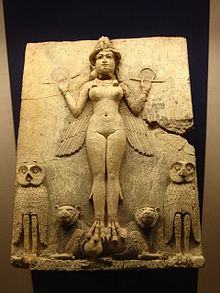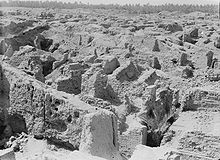Magic fingers art










According to a Babylonian date list, Amorite rule in Babylon began (c. 19th or 18th century BC) with a chieftain named Sumu-abum, who declared independence from the neighboring city-state of Kazallu. Sumu-la-El, whose dates may be concurrent with those of Sumu-abum, is usually given as the progenitor of the First Babylonian dynasty. Both are credited with building the walls of Babylon. In any case, the records describe Sumu-la-El's military successes establishing a regional sphere of influence for Babylon.
Babylon was initially a minor city-state, and controlled little surrounding territory; its first four Amorite rulers did not assume the title of king. The older and more powerful states of Assyria, Elam, Isin, and Larsa overshadowed Babylon until it became the capital of Hammurabi's short-lived empire about a century later. Hammurabi (r. 1792–1750 BC) is famous for codifying the laws of Babylonia into the Code of Hammurabi. He conquered all of the cities and city states of southern Mesopotamia, including Isin, Larsa, Ur, Uruk, Nippur, Lagash, Eridu, Kish, Adab, Eshnunna, Akshak, Akkad, Shuruppak, Bad-tibira, Sippar, and Girsu, coalescing them into one kingdom, ruled from Babylon. Hammurabi also invaded and conquered Elam to the east, and the kingdoms of Mari and Ebla to the northwest. After a protracted struggle with the powerful Assyrian king Ishme-Dagan of the Old Assyrian Empire, he forced his successor to pay tribute late in his reign, spreading Babylonian power to Assyria's Hattian and Hurrian colonies in Asia Minor.
After the reign of Hammurabi, the whole of southern Mesopotamia came to be known as Babylonia, whereas the north had already coalesced centuries before into Assyria. From this time, Babylon supplanted Nippur and Eridu as the major religious centers of southern Mesopotamia. Hammurabi's empire destabilized after his death. Assyrians defeated and drove out the Babylonians and Amorites. The far south of Mesopotamia broke away, forming the native Sealand Dynasty, and the Elamites appropriated territory in eastern Mesopotamia. The Amorite dynasty remained in power in Babylon, which again became a small city state.
Texts from Old Babylon often include references to Shamash, the sun-god of Sippar, treated as a supreme deity, and Marduk, considered as his son. Marduk was later elevated to a higher status and Shamash lowered, perhaps reflecting Babylon's rising political power.
In 1595 BC the city was overthrown by the Hittite Empire from Asia Minor. Thereafter, Kassites from the Zagros Mountains of northwestern Ancient Iran captured Babylon, ushering in a dynasty that lasted for 435 years, until 1160 BC.
Babylon weakened during the Kassite era, and as a result, the Kassite Babylon was paying the tribute to the Pharaoh of Egypt, Thutmose III, after His Eighth campaign against Mitanni.
The city was renamed Karanduniash during this period. Kassite Babylon eventually became subject to the Middle Assyrian Empire (1365–1053 BC) to the north, and Elam to the east, with both powers vying for control of the city. The Assyrian king Tukulti-Ninurta I took the throne of Babylon in 1235 BC.
By 1155 BC, after continued attacks and annexing of territory by the Assyrians and Elamites, the Kassites were deposed in Babylon. An Akkadian south Mesopotamian dynasty then ruled for the first time. However, Babylon remained weak and subject to domination by Assyria. Its ineffectual native kings were unable to prevent new waves of foreign West Semitic settlers from the deserts of the Levant, including the Arameans and Suteans in the 11th century BC, and finally the Chaldeans in the 9th century BC, entering and appropriating areas of Babylonia for themselves. The Arameans briefly ruled in Babylon during the late 11th century BC.
During the rule of the Neo-Assyrian Empire (911–609 BC), Babylonia was under constant Assyrian domination or direct control. During the reign of Sennacherib of Assyria, Babylonia was in a constant state of revolt, led by a chieftain named Merodach-Baladan, in alliance with the Elamites, and suppressed only by the complete destruction of the city of Babylon. In 689 BC, its walls, temples and palaces were razed, and the rubble was thrown into the Arakhtu, the sea bordering the earlier Babylon on the south. The destruction of the religious center shocked many, and the subsequent murder of Sennacherib by two of his own sons while praying to the god Nisroch was considered an act of atonement. Consequently, his successor, Esarhaddon hastened to rebuild the old city and make it his residence for part of the year. After his death, Babylonia was governed by his elder son, the Assyrian prince Shamash-shum-ukin, who eventually started a civil war in 652 BC against his own brother, Ashurbanipal, who ruled in Nineveh. Shamash-shum-ukin enlisted the help of other peoples against Assyria, including Elam, Persia, the Chaldeans, and Suteans of southern Mesopotamia, and the Canaanites and Arabs dwelling in the deserts south of Mesopotamia.
Once again, Babylon was besieged by the Assyrians, starved into surrender and its allies were defeated. Ashurbanipal celebrated a "service of reconciliation", but did not venture to "take the hands" of Bel. An Assyrian governor named Kandalanu was appointed as ruler of the city. Ashurbanipal did collect texts from Babylon for inclusion in his extensive library at Ninevah.
After the death of Ashurbanipal, the Assyrian empire was destabilized due to a series of internal civil wars throughout the reigns of the Assyrian kings Ashur-etil-ilani, Sin-shumu-lishir, and Sinsharishkun. Eventually, Babylon, like many other parts of the Near East, took advantage of the chaos within Assyria to free itself from Assyrian rule. In the subsequent overthrow of the Assyrian Empire by an alliance of peoples, the Babylonians saw another example of divine vengeance.



The ancient city, built along both banks of the Euphrates river, had steep embankments to contain the river's seasonal floods. The remains of the city are in present-day Hillah, Babil Governorate, Iraq, about 85 kilometers (53 mi) south of Baghdad, comprising a large tell of broken mud-brick buildings and debris. The site at Babylon consists of a number of mounds covering an area of about 2 by 1 kilometer (1.24 mi × 0.62 mi), oriented north to south, along the Euphrates to the west. Originally, the river roughly bisected the city, but the course of the river has since shifted so that most of the remains of the former western part of the city are now inundated. Some portions of the city wall to the west of the river also remain.
Only a small portion of the ancient city (3% of the area within the inner walls; 1.5% of the area within the outer walls; 0.1% at the depth of Middle and Old Babylon) has been excavated. Known remains include:
Archaeologists have recovered few artifacts predating the Neo-Babylonian period. The water table in the region has risen greatly over the centuries, and artifacts from the time before the Neo-Babylonian Empire are unavailable to current standard archaeological methods. Additionally, the Neo-Babylonians conducted significant rebuilding projects in the city, which destroyed or obscured much of the earlier record. Babylon was pillaged numerous times after revolting against foreign rule, most notably by the Hittites and Elamites in the 2nd millennium, then by the Neo-Assyrian Empire and the Achaemenid Empire in the 1st millennium. Much of the western half of the city is now beneath the river, and other parts of the site have been mined for commercial building materials.
Only the Koldewey expedition recovered artifacts from the Old Babylonian period. These included 967 clay tablets, stored in private houses, with Sumerian literature and lexical documents.
Nearby ancient settlements are Kish, Borsippa, Dilbat, and Kutha. Marad and Sippar were 60 kilometers (37 mi) in either direction along the Euphrates.
Comments
Post a Comment